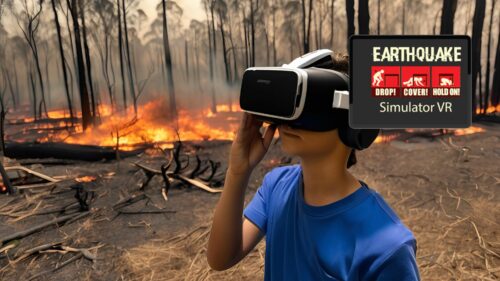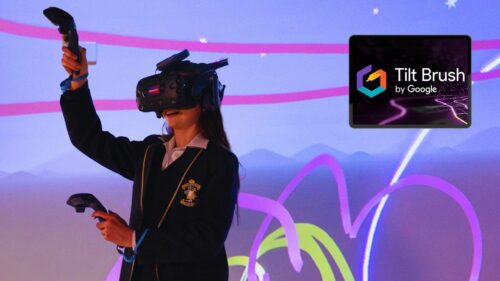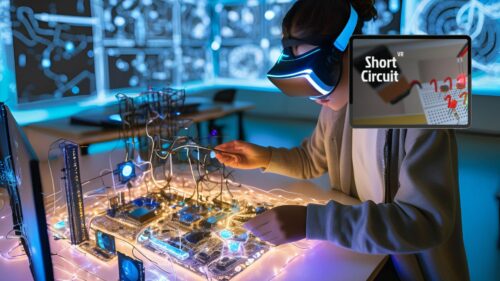Task Summary
Students will create liveable cities based on their understanding of what makes a city more liveable than another, and based on their ‘what if?’ scenario whilst engaging in an immersive virtual reality (IMVR) experience.
Learn MorePreparation
Students are expected to:
- Have some background knowledge on Mercer’s Quality of Living Factors.
- Have some background in using IMVR and the Tiny Town experience
- Have a basic background in building on CoSpaces. If not, please add at least a 1×60 minute lesson for learning the basics. There are tutorials linked in the resources section
Teachers should make sure that:
- IMVR headsets are calibrated and charged
- They are familiar with the Tiny Town experience on the IMVR
- Students are able to access YouTube videos.
- Slide deck has been checked and the teacher has enabled the deck’s accessibility so students can access them.
- A copy of the Student Digital Notebook has been distributed to students and they have downloaded/ made a copy for themselves.
- CoSpaces logins have been organised for students
- Students are divided into pairs or groups depending on how many devices are available. A suggested rotation cycle may be:
Group Round 1 Round 2 Round 3 Group 1 IMVR Build Explore Group 2 Explore IMVR Build Group 3 Build Explore IMVR This may differ based on student numbers and number of HHVR headsets/ devices.
Lesson Sequence
- Ask students to think back to their knowledge on Mercers Quality of Living Factors and what makes a city liveable.
- Direct students to respond to the questions in their Student Digital Notebook;
- What if we removed or changed an element or liveability factor in a city design?
- Is it possible for the city to still be deemed liveable?
- Direct students to consider the following scenario;
- What if there were no roads in a city? What would this mean?
- Ask students to brainstorm lists of what this would mean in their digital notebooks. For example; no cars/buses, less CO2 emissions, but a need for people to get around still – so perhaps airwalkways, cable cars, whatever creative solutions they could come up with!
- Ask students in their pairs/ groups to come up with their own ‘what if’ questions about cities to investigate. Some examples could be:
- What if cities could only use ‘green energy’?
- What if there were no supermarkets?
- What if cities were contained to one skyscraper (built up rather than spread out)?
- What if the cities were completely underground?
- What if waste was banned?
- Introduce the stations students will be engaging inStation Based Rotations in 10-15 min intervalsStation 1 – IMVR
- Students are to engage with Tiny Town on the IMVR to create a city that they would deem as liveable. Students will work in pairs per station and take turns to build and direct.
Station 2 – Explore
- Students are to use Google Earth to visit the top 10 most liveable cities as stated by Mercers to get ideas and explore the different features that make these cities liveable
Station 3 – Build
- Students use CoSpaces to create a city of ‘What if’, choosing one of the ‘what if’ scenarios that was brainstormed. Share the CoSpaces Example: Liveability city example with students of a city made with the “what if” statement of “What if there were no roads?” (the QR code for this is in their Student Digital Notebook as well).
Direct students to access CoSpaces EDU and to use a background of a plain environment (not a pre-made city) to start with
-
- Students may work in pairs if appropriate
- Ask students to share their city designs/creations using CoSpaces EDU by sharing the link/ QR code. Students will be able to view each other’s creations in VR or AR by scanning each other’s QR codes.
Download the PDF for more information



